–By Eric Fantin– Brian Cornell, our fearless wrangler of all things digital and print for InterMarque, has been talking about replacing one of the suspension arms of his trusted steed for years, a 1966/86 Citroën 2CV. Life finally settled down a little this fall for the club to help Brian dive into it.
The goal is to eliminate what I call a progressing death wobble. Every time he would hit a uneven part of the road the whole front end would shake uncontrollably. Braking would stop the shudder, but a scary thing that needed addressing. I have experienced it myself, on several occasions. On more conventional cars it is usually a ball joint issue. In the case of a Citroën 2CV, and in this specific case, it involved replacing the complete suspension arm.
We were fortunate to have a used one on hand (more on that later). The process to remove and replace is pretty straightforward. If one is used to working on these cars it involves removing the front fender, disconnecting the steering end, exhaust, shock absorber, spring connection, and CV axle. The arm moves on 2 oversized bearings. Once all this is either removed or disconnected the arm comes out.
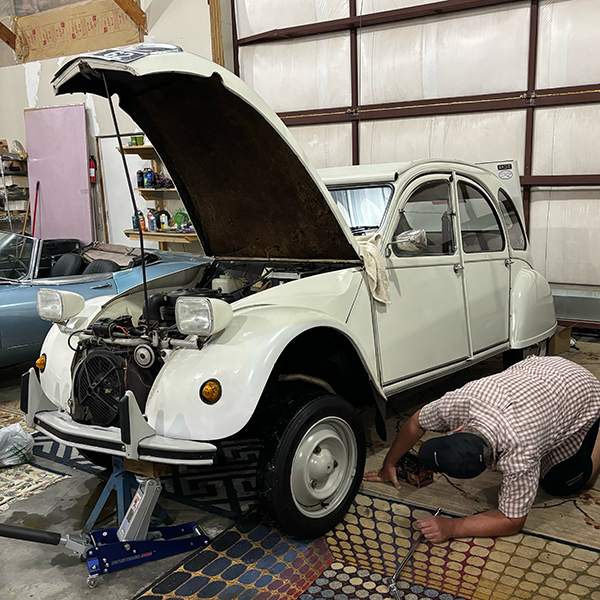
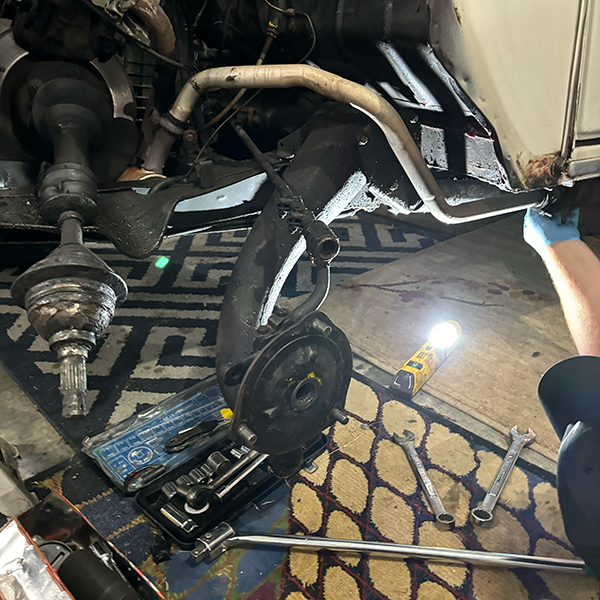
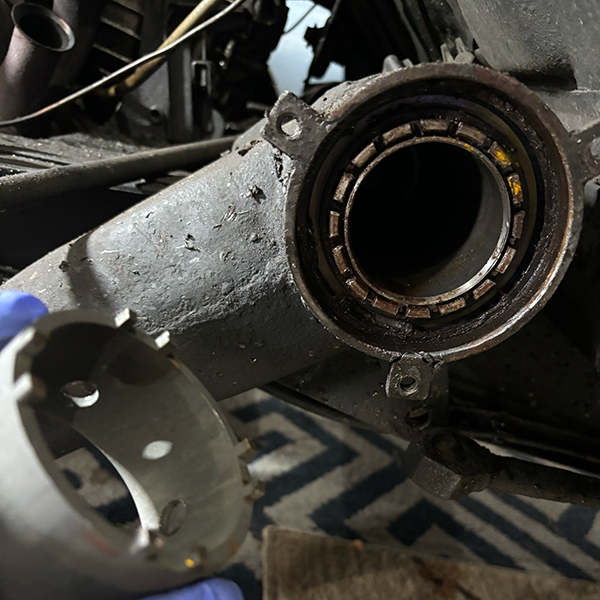
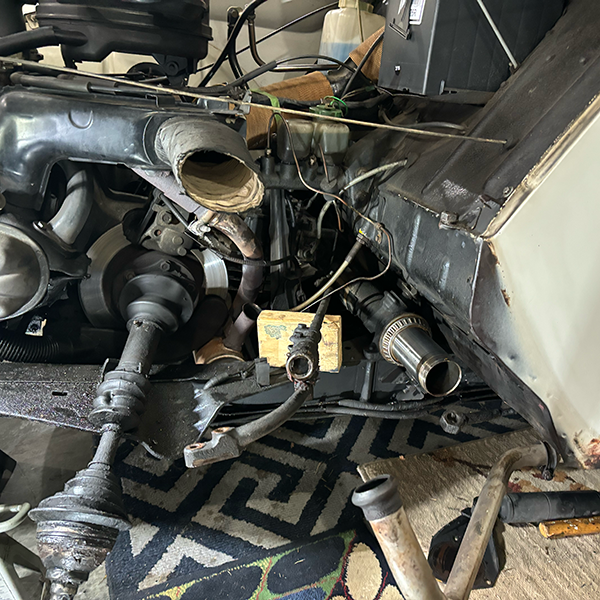
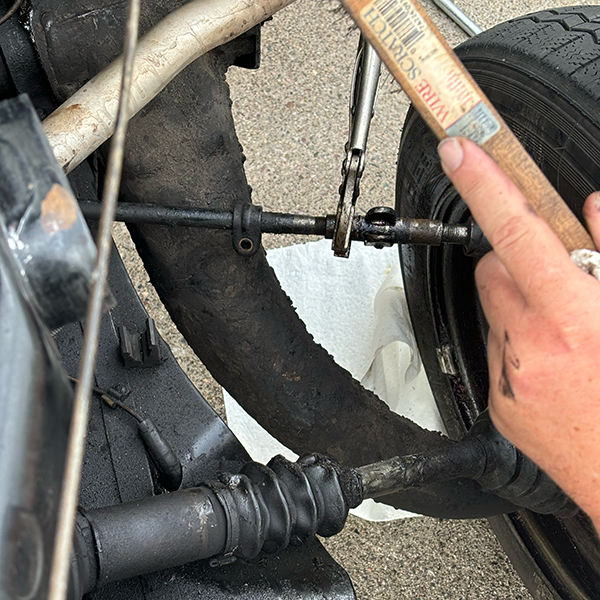
Refitting the new-used arm revealed some inevitable discoveries. Over the long production life span of the 2CV (1948-1990), modifications were made and not everything lines up the same. The bolts even changed size. After a fair amount of frustration, brute persuasion, and some cursing, everything went back together.
Unfortunately, the replacement part might have been damaged, which was not obvious to the naked eye. Once the car was dropped down and the suspension compressed, there was obviously excessive wheel camber. We readjusted the wheel alignment the old fashion way (after cleaning up some threads) to mitigate the problem. The car is now drivable, tracts straight, and the death wobble is gone. Luckily the car was due for new tires that have not been mounted yet so the added wear is bearable for the short term. We will revisit the situation in a future article as to how we fix it for the long-term.

